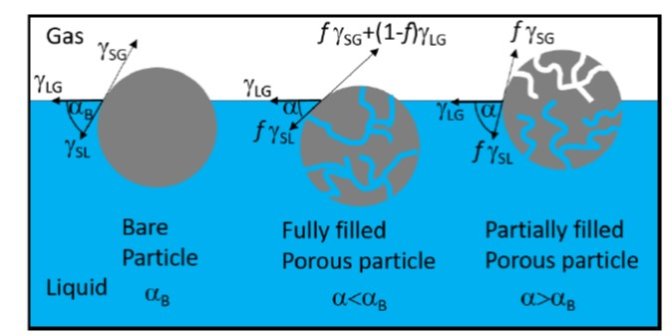Elise Azar, Christophe Blanc, Ahmad Mehdi, Maurizio Nobili, Antonio Stocco. J. Phys. Chem. C 2019, 123, 26226−26235
Cationic surfactants are widely used in many industrial and fundamental research fields ranging from cosmetics, fabrics, nanoparticle synthesis, DNA folding, self-assembly, and mesoporous material fabrication. Besides these applications, the fate of cationic surfactants and the resulting waste in water is an important issue, since cationic surfactant contamination of water represents an environmental problem.
Here, we have investigated the wetting and diffusion of porous silica colloids and the adsorption of cationic surfactants on porous colloidal particles. Porous colloids of different pore sizes are deposited both in the bulk and at the interface. By varying pore size and surfactant concentration and investigating counterion effects, we aim at controlling CTA+ cationic surfactant adsorption.
Based on these results, a strategy to clean the surface and the volume of water with micron sized particles can be developed. Note that these particles are small enough to perform Brownian motion and rapidly diffuse at the interface (and in the volume) but also large enough to slowly sediment. Hence, porous colloids may be ideal candidates for an efficient removal of surfactants at low concentrations and present the advantage to be easily removed after decontamination by sedimentation or flotation. It is important to remark that larger size particles are difficult to adsorb at the interface and may sediment very fast, while nanoparticles may remain dispersed in water due to the strong Brownian motion and cannot be separated by gravity or adsorption on bubbles as in flotation.

